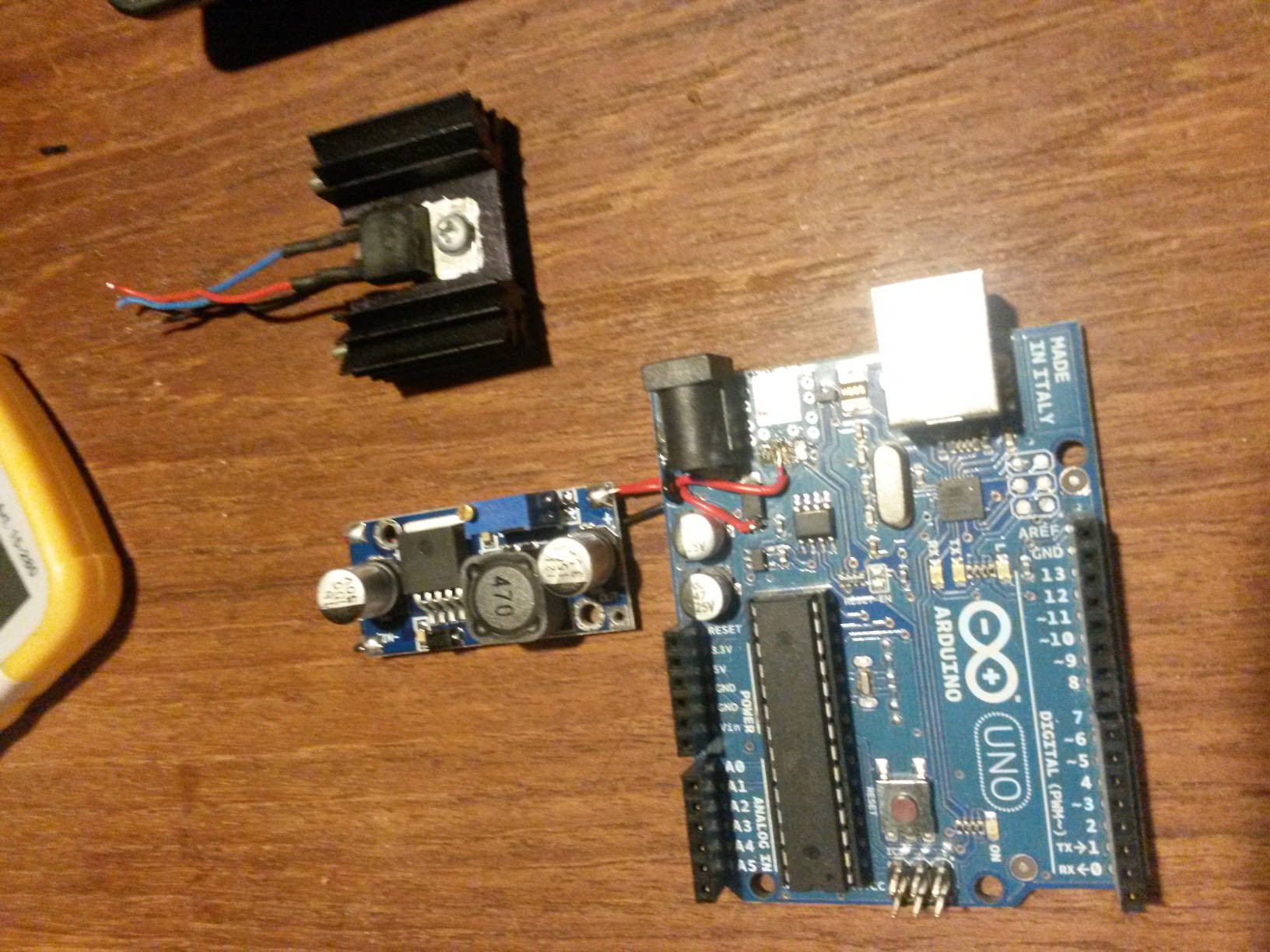-
Logging on the server side
09/11/2014 at 22:01 • 0 commentsI've noticed that the screen session containing the ISS.py server program has terminated a couple of times (~once a month) now, and have added a logging feature in an attempt to debug the crash... Now we wait....
I'm using this as a reference.
~Mark
-
Step it down a notch
08/14/2014 at 11:03 • 0 commentsThe power dissipated in a linear regulator is equal to the current multiplied by the voltage drop (P=I*ΔV)
In my case the output voltage from the ethernet shield is 12V, and the arduino needs 5V, which gives a ΔV=12V-5V=7V
The current draw of my entire setup is appoximately 500mA (0.5A) so the power in the regulator would be about: P=7V*0.5A=3.5W which is way more than the tiny regulator on the uno could handle.
Therefore i've had to replace it with a 7805 regulator in a TO220 casing with added proper cooling... After a couple of months of running quite warm I decided that I was running it too close to it's maximum rating and exchanged the regulator with this step down converter from dx.com Now everything is nice and cool(er).
![]()
- TO220 7805 regulator (unmounted) top left
- Step down converter mounted on the Arduino:
- input (+)= Vin (12V from the ethernet shield)
- Output (+)= 5V
- Ground (-) = GND
Arduinos are nice and easy to modify; Since they're open source the schematics and design files (open them with eagle) are freely available, so you can easily learn where to (de)solder :)
BTW: The links to design files and schematics are for the first version of the Uno which is the one i use, for other (current) versions look at http://arduino.cc
-
An interesting challenge
08/14/2014 at 10:47 • 0 commentsI differentiate between regular and visible passes of the space station (setting showAll=f or =t in the call to heavens-above.com from the python script)
The list of regular passes contains ALL of the passes, the list of visible passes contains a 'subset' of these that are visible.
Regular passes always start and end at 10degrees elevation because visibility is neglected, but visible passes sometimes start higher in the sky and therefore later than the corresponding 'regular' pass
I had fun discovering this, and writing the bit of code that discerns which of the regular passes to disregard, since they are also in the list of visible passes albeit some of the visible passes are delayed..
Keeping in mind that the spacestation has a ~90 minute orbital period i can quite easily determine that two pass-entries within a few minutes of each other must represent the same actual orbital flyby, and thus I can disregard the 'regular' pass, since the visible ones are way more fun :)
-
Conservation of vacumflourescence - A programmer's ramble
08/08/2014 at 19:48 • 0 commentsMy latest update to the code is a displaybuffer, which is used to store a string before it is printed to the (vacumflourescent) display.
The buffer lets me do all sorts of nifty things to my data before printing it out to the display, and also saves me a bunch of write cycles: before, when i wanted the clock to print i printed the hours, a colon, the minutes, a colon and then the seconds.. Now i put those things in the displaybuffer string and send it all at once.. nice and tidy.
It also let's me check the length of the data-to-be-printed, so i can determine where on the display the last caracter will be, and act accordingly: This is especially useful when doing countdowns (which I do a lot) since text blocks tend to get smaller and smaller as a spacestation pass approaches.
In short: the displaybuffer helps me makes sure I don't leave behind stray characters from previous prints, and helps me cut down on (the theoretically limited number of) write cycles to the VFD.
-
Code review
08/05/2014 at 18:22 • 0 commentsHaving my project up here on hackaday.io is doing wonders for my productivity, (as you can see on the project's github) I've redone the entire arduino statemachine, thereby squashing several bugs, I've externalized the VFD (display) functions into a full fledged arduino library, i've added geolocation IP lookup to the python code, and generally documented everything more nicely. .. yay hackaday! (and yay me)
-
Geolocation is now a thing that i do :)
07/25/2014 at 01:01 • 0 commentsLamp location [LAT,LNG,TZ] is NO LONGER hardcoded into the python code. .. but is handled by IP address lookup using https://pypi.python.org/pypi/GeoIP/ .. yay!
-
Competition...
07/25/2014 at 00:57 • 0 commentsIt seems i'm not the only one to be fascinated by the space station or VFD NTP clocks :)
ISS Lamp - NTP clock - Artpiece
My "standalone" take on the ISS lamp lights up when the spacestation is overhead. It doubles as a NTP controlled clock.. with a VFD display.
 Robotto
Robotto